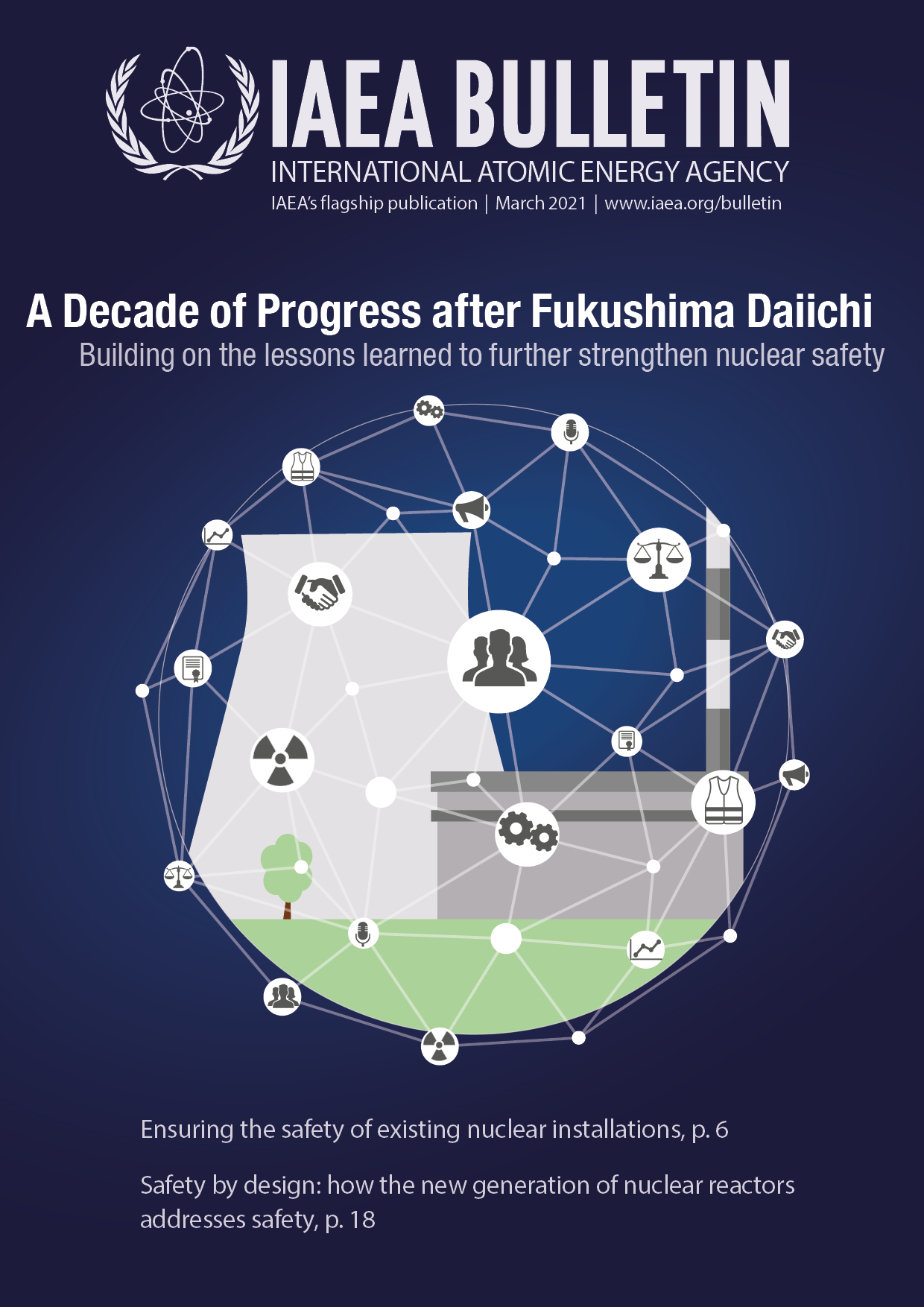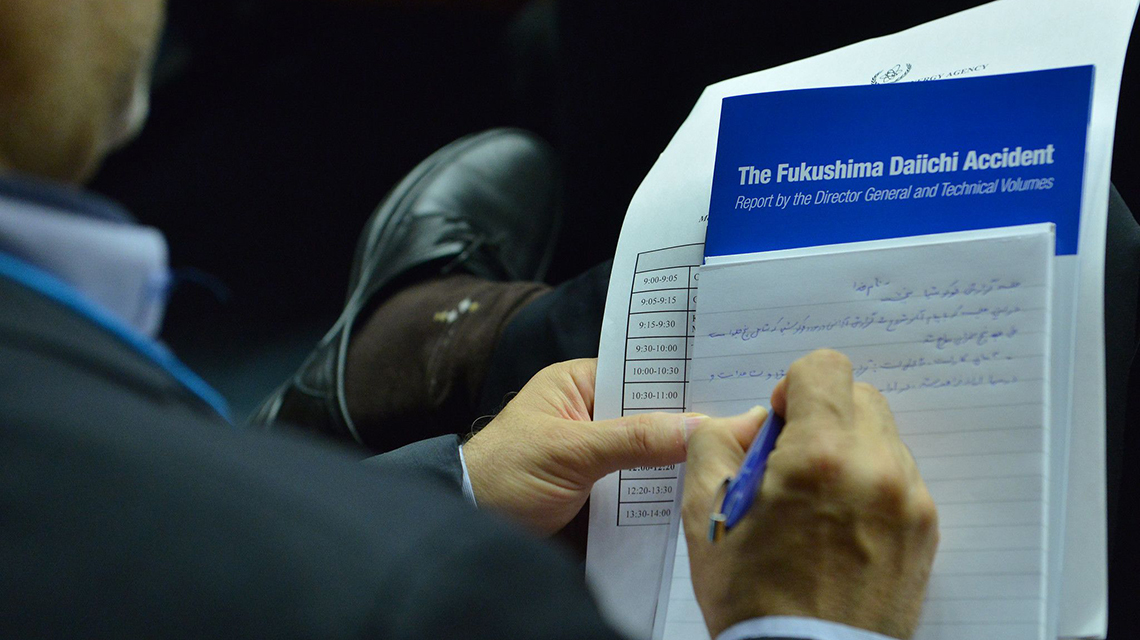The IAEA Fukushima Daiichi accident report
In 2015, the IAEA published The Fukushima Daiichi Accident, a comprehensive report on the accident. It provides an authoritative, factual and balanced assessment, addressing the causes and consequences of the accident, as well as lessons learned. The publication of the Report by the IAEA Director General and its five accompanying technical volumes was the result of an extensive international collaborative effort involving over 180 experts from 42 countries — with and without nuclear power programmes — and several international bodies. Their participation ensured a broad representation of experience and knowledge. An International Technical Advisory Group provided advice on technical and scientific issues.
The Report provides a description of the accident, as well as its causes, evolution and consequences, drawing upon data and information from up to March 2015, from a wide range of sources. It includes the results of the work carried out in implementing the IAEA Action Plan on Nuclear Safety, and it highlights the main observations and lessons. Significant amounts of data were provided by the Government of Japan and other organizations in Japan.
The Report calls for a systemic approach to safety that addresses the entire system by considering the dynamic interactions within and among three types of factors: human or individual (e.g. knowledge, thoughts, decisions, actions), technical (e.g. technology, tools, equipment) and organizational (e.g. management system, organizational structure, governance, resources). This systemic approach to safety works by addressing this complex system of interactions as a whole. The Report also highlights the importance of better examining the ways in which the strengths and weaknesses of all these factors influence one another in order to proactively reduce or eliminate risks.
Relevant international bodies worked together to develop clear and accessible explanations of the principles and criteria for radiation protection so that decision makers and the public could more easily understand their application. A better communication strategy is needed to convey the justification for such measures and actions to all stakeholders, including the public, the Report concluded.
It is also relevant to point out that, in spite of the magnitude of the accident in which three nuclear cores melted, no radiation-induced health effects were observed among workers or members of the public that could be attributed to the accident. This is in line with the conclusions that the independent United Nations Scientific Committee on the Effects of Atomic Radiation (UNSCEAR) reported to the United Nations General Assembly in the years following the accident.
The Fukushima Daiichi accident underlined the vital importance of effective international cooperation on nuclear safety, and the IAEA is where most of that cooperation now takes place. As a result, the Report’s recommendations have since been incorporated into national regulations, international safety standards and corresponding IAEA Safety Guides.
The Agency continues to analyse the relevant technical aspects of the Fukushima Daiichi accident and to share and disseminate lessons learned to the wider nuclear community. It will continue to support its Member States in implementing these lessons learned and will consider conducting any appropriate follow-up reviews of the implementation of these measures. The completion of the Report does not mean that our work is done — the IAEA’s efforts in the formulation of its nuclear safety strategy must and will continue. It is essential that the IAEA maintain and build upon this momentum to strengthen global nuclear safety.

